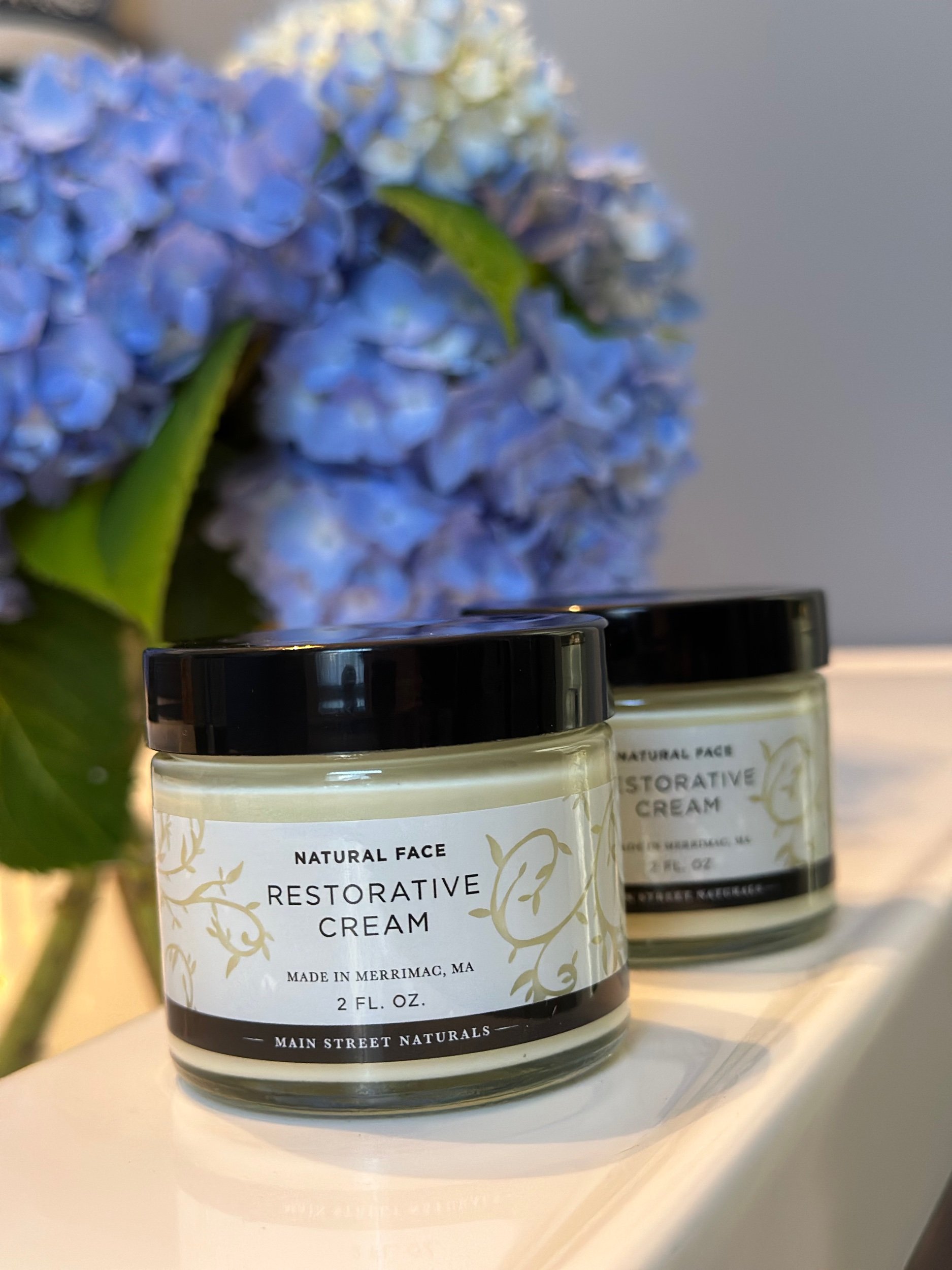RETINOL: WHY WE DON’T USE IT
Note: We are not dermatologists or healthcare providers. This is all research that we have done on our own. Please consult your doctor first for any skin conditions you may have.
What is Retinol?
Retinol is derived from Vitamin A. (So far so good.) It is a mild Retinoid, which are an essential nutrient for your body, that is a common ingredient in skincare products.
What is Retinol used for?
Retinol is used in skincare products to increase collagen production, reduce fine lines and wrinkles, reduce sun damage, even out skin tone, treat mild acne, reduce scarring, and improve skin texture. (Again, still all sounds like good stuff).
Side effects of Retinol
We just read through retinol’s intended results, but how does it achieve them. One of retinol’s functions is to speed up skin cell turn over. This can lead to acne because it is pushing up junk to the surface of your skin that has been trapped underneath. This is not really what we are concerned about since it does go away over time, and when you switch skin routines, ance can happen as your skin adjusts to the new routine. It is how retinol achieves this rapid turn over of cells that concerns us. It loosens the connections between cells, called the keratinocytes. While acne is a short term effect, dryness and flaking can be long term because of that loosened connection. On top of that, there have been some theories that retinol will also decrease oil production, which causes dryness.
Retinol is also photosynthesizing, meaning if you put it on before going into the sun, it can cause a reaction on your face. Some products using retinol are intended for night time use because of this. Others recommend putting SPF on to counteract any reaction you may have. (Another layer of chemicals).
Lastly, we know that retinoids are essential nutrients to life, but too many can have negative effects on your body. Retinol is a known endocrine disruptor. Endocrine disruptors have been linked to diseases like Alzheimer’s, Parkinson’s, depression, and developmental issues. Pregnant women should not use retinol according to the California EPA because it boosts your dosage over the healthy daily limit when pregnant or trying to conceive. While, no, we don’t think that one retinol product that you use at night is going to cause Parkinson’s alone, it is just one thing in the giant list of endocrine disruptors that you are exposed to every day, and you are putting it directly on your face. Skincare products are number 3 on the list of items that most commonly expose you to endocrine disruptors. We are here to try and break that commonality.
How to get the same results
Below are a list of some of our favorite ingredients found in our face line that all provide the same function to your skin as retinol would.
Product key:
(T) Hydrating Toner | (M) Detoxifying & Exfoliating Clay Mask | (W) Waterless Moisturizer | (R) Restorative Cream | (C) Exfoliating Cleanser
Allantoin Powder: improves the texture and appearence of skin, reducing redness and helping heal minor injuries. (M)
Bamboo Powder: anti-inflammatoryand reduces signs of aging. (M)
Baobab oil: helps with acne and reduces inflammation. (W, R)
Black Cumin Oil: helps fight fungal infections, promotes regeneration of skin cells, and brightens complexion. (W, R)
Camellia Oil: helps stimulate collagen production, reducing the appearance of wrinkles. (W, R)
Coco Glucoside: surfactant (cleanser) that helps soothe irritations and prevents skin from drying out (C)
Evening Primrose Oil: soothes and moisturizes skin, while improving elasticity. (W, R)
Frankincense Hydrosol: strengthens your skin, improving elasticity, and evens out complexion. (T)
German Chamomile Oil: helps reduce signs of aging, protecting the skin from free radicals. (T)
Green Tea Oil: soothes irritated skin, reduces inflammation, and helps prevent wrinkles. (C)
Helichrysum Essential Oil: helps protect your skin against premature aging, stress, and sun damage. (W, R)
Ho Wood Essential Oil: is anti-aging, antimicrobial, anti-inflammatory, and it helps rejuvenate and repair skin cells. (T)
Hydrosols (aloe and lavender): help soothe your skin, clear away excess sebum, unclogging your pores, and help with sun burns, as well as reducing inflammation. (R, T)
Natural clays: cleanse and exfoliate the skin, control oil and take away impurities. (C, M)
Neroli Essential Oil: helps treat acne and reducing the appearance of scars. (T)
Oat Milk Powder: anti-inflammatory and a humectant, helping retain water in the skin. (M)
Plum Kernel Oil: helps protect from free radicals caused by pollution and UV rays, acts as an anti-inflammatory, promotes healing, and boosts collagen production. (R, W)
Prickly Pear Oil: reduces inflammation and prevents skin damage and acne. (R, W)
Rosehip Oil: high in Vitamin A, is anti-aging, and reduces inflammation. (R, W)
Safflower Oil: rich in Vitamin E, reduces blemishes, and repairs the skin barrier. (R, W)
Sea Buckthorn Oil: rich in antioxidants and moisturizes and improves skin tone. (R, W)
Silk Powder: forms a protective layer over your skin, locking in moisture and making it appear soft and smooth. (C, M)
Spirulina Powder: rich in vitamins, amino acids, and fatty acids that help improve skin health. (M)
Stearic Acid: protects your skin from water loss and enhances its texture. (R)
Squalane: helps keep skin hydrated and improves elasticity. (R, W)
Vegetable Glycerin: hydrates and improves skin barrier. (C, R)
Xanthan Gum: improves skin texture. (C)








